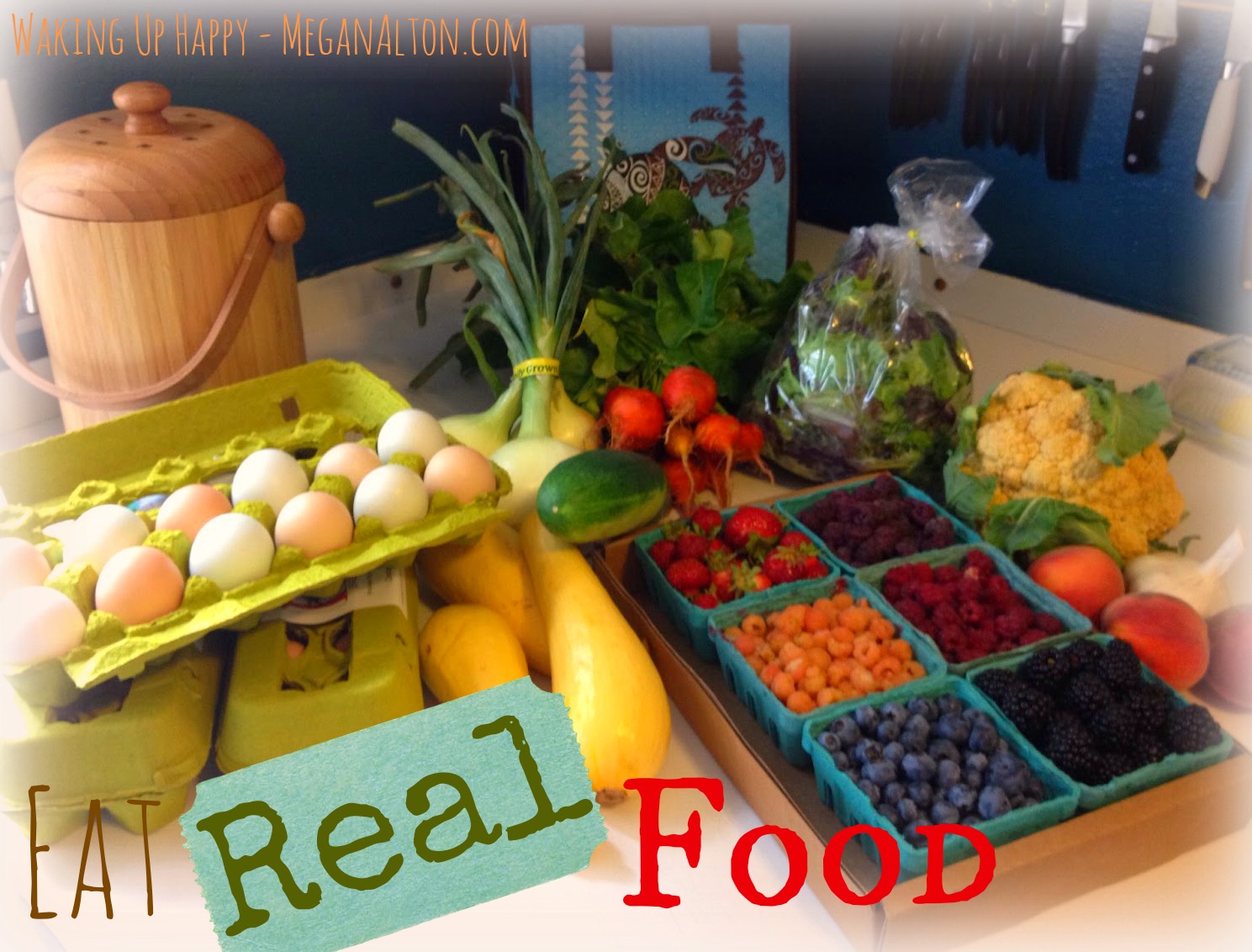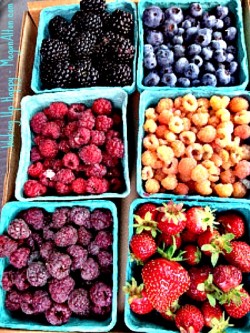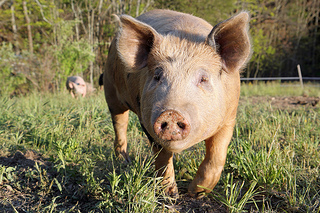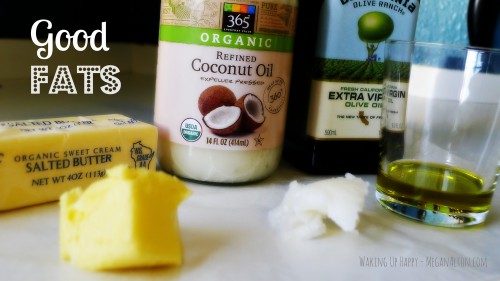 Birth, Parent, Live…Naturally & with Real Food
Birth, Parent, Live…Naturally & with Real Food
The tagline for my blog is pretty self explanatory. I’ve written about all of these topics for a while now and I’ve gotten great feedback about my birth and parenting posts. While I’ve written about Real Food in the past I want to give any of you who are interested some concrete ways to bring a little more of the good stuff into your life.
If you’re a Real Foodie and you already know what’s up, then you probably won’t learn anything new in this post. You’ll just be totally reaffirmed that you are indeed making the right choices and obviously being the best possible you.
You Might Be Interested In Real Food If…
- The food you currently eat gives you the blahs, the sads or the crankies.
- There are chronic health issues that you’re dealing with, and you either can’t find a solution or want to try to heal on your own before totally giving yourself over to modern medicine. (source)
- You want to lose weight and be healthy.
- Caring for the environment means something to you.
- You want to teach your children healthy eating habits.
- It’s time to change up your old routine and learn something new.
- There are babies in your present or future.
I could go on and on, but you get the idea. Real Food is for everyone: men, women, children, babies, omnivores, vegetarians, conservatives, liberals…YOU.
Easy As 1,2,3
It’s taken me years on my path to Real Food, and I’ve really just gotten into it full time. Like any change, it helps to start small. Change one thing at a time, get used to it, and then take another small step.
I’ve thought about this long and hard and here are my top 3 ways to start getting into Real Food. It doesn’t involve cleaning out your pantry and replacing all your food (I’m for less waste too) so fear not. Use up whatever goods you’ve already got and start replacing them when you need to, but with the Real Food alternatives.
1. Change Your Fats And Oils
Are you still using Canola oil, Vegetable oil and Crisco? They’re BAD. You can learn more about that here and here. Are you concerned about saturated fat and cholesterol? Guess what, we’ve been fed a whole lotta mumbo jumbo about how bad they are for you. If you’re up for some myth busting, check this out. Or you need something more mainstream and scientific, here’s a video from Dr.Mercola.
- Coconut oil. The unrefined has a coconut flavor and smell which puts me off, but some people love it. I use the refined which has no odor or flavor. It’s GREAT for cooking foods in high heat. In the winter mine gets solid on the counter, but can easily be melted and used as a liquid. Bonus, I use it in the shower to shave my legs and as a facial moisturizer before I get out.
- Organic butter from cows raised on pasture, which means they eat grass and non-GMO grains.
- Olive Oil for your cold oil consumption i.e. dressings. Don’t use it for cooking, it’ll go rancid.
- Tallow (from cows) & lard (from pigs). These can be harder to come by, but they’re great for cooking on high heat and lard from the pig underbelly is good for baking. If you want to render some of your own, check this blog out.
2. Shop At The Outer Edges Of The Grocery Store
Better yet, shop at your Farmer’s Market where the produce, meats, cheeses and grains are prepared locally and have a good chance of being non-GMO and/or organic. If you’re not sure you can easily ask the farmer who grew them, because they’re usually behind the stand. Better yet, grow your own.
 If you’re like me, however, you have to go to the grocery store in the cold seasons. It makes perfect sense that all the fresh food is at the edge of the store because that’s where the refrigerators are.
If you’re like me, however, you have to go to the grocery store in the cold seasons. It makes perfect sense that all the fresh food is at the edge of the store because that’s where the refrigerators are.
Real Food goes bad, so it often has to be kept cold. If the fresh veggies are too expensive, go for the frozen ones. I stay away from cans as much as possible because of BPA and weird chemicals used to coat the inside of aluminum cans.
In the beginning it’s not the most important thing to buy all organic, but try to shop your fruits and veggies from the Clean 15 and the Dirty Dozen list. In general, pesticides and genetically modified foods are not “real”. Organic or not, whole fruits and vegetables are best.

When it comes to meat, organic is good, but pastured and humanely raised is better. Just because an animal is raised on organic feed does not mean they were treated humanely. If we’re going to consume an animal, make it a happy one!
This is the nice part about knowing your farmer. I have no concerns that the chickens, beef and pigs that we consume had happy lives living as nature intended, because I speak with my farmer every other Friday through the winter and every Saturday during Farmer’s Market season.
I even went so far as to find out how they butchered the animals. My brother makes a good point when he says that slaughter can never be humane, but it can be done with respect towards the animal in the time before they die. Sorry if this is too much friends, but this is what real looks like.
Want to know what healthy animal husbandry is? Check out Joel Salatin and his family farm, Polyface Farms.
It may take some asking around, but chances are good that somewhere near you is an ethical farmer who wants your business. Search the web, ask the butcher at your local natural food store, find that crazy friend who’s into Real Food and ask them (wink wink).
3. Eat At Home More Often
This was really hard for me. It’s so convenient to eat out or get take out for home. Especially when we work non-stop and are generally worn out by a diet and lifestyle that doesn’t give us the vitality we need to go-go-go. We still eat out every Friday night and sometimes more depending on, you know, life.
 Mostly I cook at home these days. It takes a bunch of extra work, but it’s worth it to feed myself and my family right. Meal planning helps, and I’m planning a post in the near future that will help with that.
Mostly I cook at home these days. It takes a bunch of extra work, but it’s worth it to feed myself and my family right. Meal planning helps, and I’m planning a post in the near future that will help with that.
The deal is that most restaurants cook with rancid vegetable oils, use meat from abused animals (have you seen Food Inc. yet?) and don’t cook with organic veggies. Plus they charge you a whole lot more to cook the food for you than if you just bought the Real Food ingredients and prepared it at home. We’re paying for convenience and any $$$ not spent out is a nice wad of dough you can put back into your wallet.
There You Have It, You Can Do Real Food Too!
Remember to take it slow and steady.
1. Change your fats and oils.
2. Shop at the outer edge of your grocery store.
3. Eat at home more often.
This post featured on Party Wave Wednesday, Tasty Traditions, Thank Your Body Thursday, Fight Back Friday, Small Footprint Friday

Wonderful post–lots of good real food information!
I’ve been doing a series of posts on my blog about reducing our food footprint, and I appreciate your process of making small changes instead of trying to change everything all at once.
I’m here through Small Footprint Fridays. Nice to meet you, Megan.
Thanks for stopping by Lorraine! We’re trying to reduce our footprint too and it’s a lot harder than it should be. Nice to meet you to
Hi Lorraine! Sorry I didn’t reply sooner. Thanks for the feedback and for your posts about reducing food footprints. Nice to meet you too
Wohh precisely what I was searching for, appreciate it for putting up.